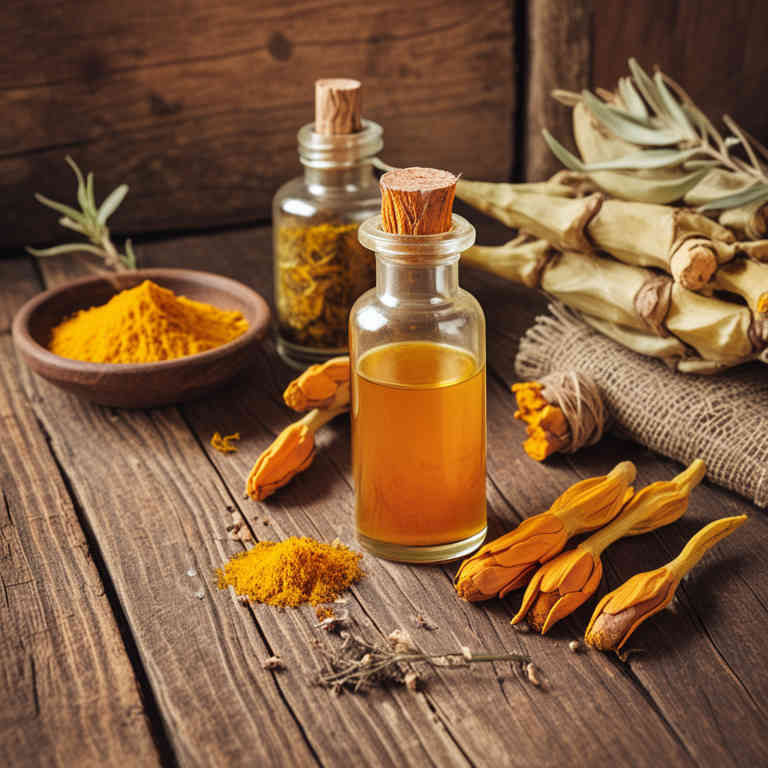Curcuma longa tincture for medicinal use

Curcuma longa tincture is a concentrated liquid extract made from the rhizomes of the turmeric plant, which is native to South Asia.
It is prepared by soaking the dried rhizomes in alcohol to extract the active compounds, particularly curcumin. In herbalism, this tincture is valued for its anti-inflammatory, antioxidant, and analgesic properties. It is commonly used to support joint health, reduce inflammation, and aid in digestion.
This preparation is often taken internally in small doses or applied topically for skin conditions and pain relief.
Uses
Curcuma longa tincture has been used to treat inflammation, digestive issues, and skin conditions for centuries in traditional medicine systems such as Ayurveda and Chinese medicine.
Derived from the rhizome of the turmeric plant, it has a long history of use in India and Southeast Asia for its purported anti-inflammatory and antioxidant properties. In modern times, it is widely studied for its potential role in supporting joint health, reducing oxidative stress, and even aiding in the management of certain chronic diseases. Today, it is commonly used as a dietary supplement and in topical applications for its purported therapeutic benefits.
Its continued popularity reflects both historical tradition and ongoing scientific interest in its medicinal properties.
Benefits
Curcuma longa tincture has health benefits such as anti-inflammatory, antioxidant, and digestive support properties.
It is derived from the rhizome of the turmeric plant, which contains curcumin, a compound known for its therapeutic effects. This tincture may help reduce inflammation in the body, potentially alleviating symptoms of arthritis and other inflammatory conditions. It also supports liver function and may aid in detoxification processes.
Additionally, it has been studied for its potential role in improving mood and cognitive function.
Constituents
Curcuma longa tincture active constituents include curcumin, demethoxycurcumin, and bisdemethoxycurcumin.
These compounds are known for their potent anti-inflammatory and antioxidant properties. Curcumin, in particular, is the primary bioactive component responsible for many of the health benefits associated with turmeric. The tincture is often used to support joint health, reduce inflammation, and promote digestive wellness.
Its natural compounds may also contribute to cognitive function and immune support.
Preparation
To make Curcuma longa tincture, begin by gathering fresh or dried turmeric root and finely grinding it into a powder.
Next, place the turmeric powder in a glass jar and cover it completely with a high-proof alcohol such as vodka or ethanol. Seal the jar and let it sit in a dark, cool place for 4 to 6 weeks, shaking it occasionally to ensure even extraction. After the steeping period, strain the liquid through a cheesecloth or fine mesh strainer to remove the plant material.
Finally, store the tincture in a dark glass bottle away from light and heat to preserve its potency and extend its shelf life.
Side Effects
Curcuma longa tincture may lead to gastrointestinal discomfort, including nausea, diarrhea, and stomach upset, especially when taken in high doses.
It can also cause allergic reactions in individuals sensitive to turmeric, manifesting as skin rashes or itching. Long-term use might interfere with blood clotting, increasing the risk of bleeding, particularly in those taking anticoagulant medications. Some studies suggest it may affect liver function, though more research is needed to confirm these effects.
It is important to consult a healthcare professional before using this tincture, especially for prolonged periods or in combination with other medications.